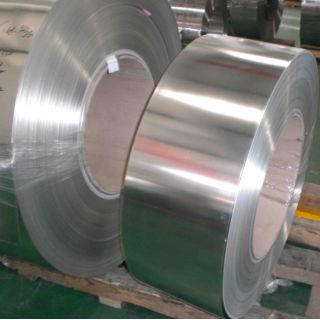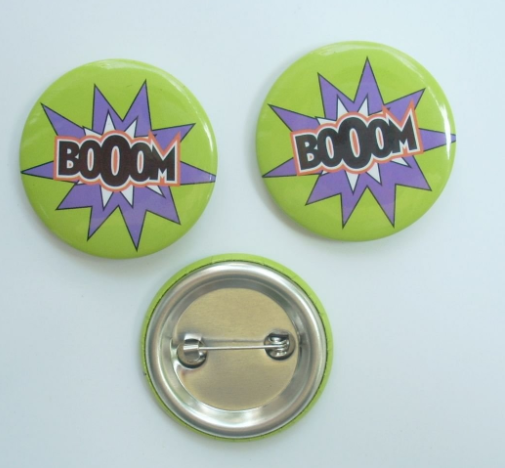1. What is tinplate? Tinplate is the common name of electroplated tin sheet, abbreviated as spte, which refers to cold-rolled low-carbon sheet or strip coated with commercial pure tin on both sides. It combines the strength and formability of steel with the corrosion resistance, tin soldering and appearance of tin, and has the characteristics of corrosion resistance, non-toxic, high strength and good ductility. It is widely used in food, beverage, grease, chemical, paint, paint, spray, bottle cap and many other daily necessities.

2. What is chrome plate?
Chrome plate, also known as Wuxi steel plate, abbreviated as TFs, is a new type of can making material developed for the situation of less tin resources and high cost. Compared with tinplate, it has the advantages of low price and strong coating adhesion, but it is not as good as tinplate in terms of corrosion resistance and appearance luster. At present, it can not be soldered by tin, and can only be welded by lap resistance welding or bonding. At present, it is mostly used for processing crown bottle caps, weak acid food cans and so on. In recent years, it has been widely used.
At present, chromium plating plate is still a new product in our country, and there is no national standard yet. Generally, the enterprise standard is formulated and implemented by referring to iso11950-1995 cold rolled chromium plating / chromium oxide steel plate or Japanese standard jisg3315-1987 Wuxi chromium plating steel plate.

3. Tinplate Encyclopedia
In 1800, the British invented the first tin can used to hold food and keep it for a long time, but at this time, the tinplate was produced by hot-dip tin method; Since the 1920s, tin cans in the United States have been greatly developed with increasing demand. In 1847, Cannery machines were invented in the United States, which gradually replaced manual canning; The invention of electric welding machine in 1900 greatly improved the efficiency of tinplate can making. Because of the high price of tin, people gradually used the method of electroplating tin to produce tinplate; After the 1990s, the technology of can manufacturers has developed rapidly, and the high-speed welding machine can reach the production level of 1000 cans / min. From the middle of the 20th century, electroplating chromium steel sheet appeared one after another to replace some tinplate products.
Electroplating tinplate can be classified according to quenching and tempering degree, electroplating amount, steel grade, annealing method, surface treatment, etc. It also has excellent solderability, weldability, formability and surface appearance. It is widely used in food cans, beverage cans, 18 liters, art canisters, spray cans, bottles and caps, household appliances, electrical materials, oil filters, wire sheath materials, etc.
According to statistics, the average annual consumption of canned food (excluding drinks) in the United States is 90 kg / person; 43 kg / person in EU; 25 kg / person in Japan; The world average is 8 kg / person; In China, it is only 1.8 kg / person. In order to produce high-quality canned food, the first thing is to have high-quality content raw materials; Second, it has excellent technology of canned food production; Third, there are excellent packaging materials tinplate.
Here is the third item.
Tinplate is a high precision product
As we all know, tin tinplate is the main packaging material of tin cans, and tinplate is a top product of Zui in cold rolling steel industry. Because:
1. the original sheet of tin iron is very pure mild steel with low carbon (C < 0.12%), and the residual non-metal in smelting mainly refers to P, s, Si, content and other metal contents, such as Cu, Cr, Mn, etc. Sometimes impurities in molten steel need to be removed in vacuum, which requires high technical requirements; 2. during hot rolling, the gradient of temperature rise and cooling must be strictly controlled, otherwise segregation is easy to occur; 3. cold rolling is a steel substrate with a thickness of 2mm (the width is generally more than 1 meter) at a speed of 30 meters per second and is about 0.20. During 24 hours of cold rolling, the average thickness error of the product shall not be greater than 5 microns. Therefore, the rolling mill has pressure similar to that of 10000 tons water press, and also has the precision of clock; 4. the annealing temperature and speed control are not accurate, and the hardness of sheet metal does not meet the requirements; 5. After Zui, in any process such as cleaning, electroplating, soft melting, passivation and oil coating, the processing time is slightly prolonged or shortened, and the quality of sheet metal will be greatly reduced.
In short, this kind of high-speed, high-precision and high-power equipment, its products not only have good internal quality, but also have to achieve mirror surface finish, which is destined to be a high-precision and high-tech product with strict requirements.
The quality index of tinplate is that there are more than 40 inspections in the production process and before leaving the factory. But the iron indexes of various countries (except the United States and foreign countries), except for the flatness, right angle, thickness error, etc., the internal quality (except tin plating quantity, tempering degree and hardness) of tinplate, i.e. its corrosion resistance, has no clear provisions.
The internal quality indicators related to the application of tinplate are as follows:
1. Tin plating amount: obviously the thicker the better. But the thicker the tin, the more the cost. 2. Tin iron alloy layer: the finer the better, which is characterized by ATC and its thickness; 3. Iron dissolution value: i.e. ISV, the more obvious the value is, the less microporous the tin layer is; 4. Impurity degree of steel base surface: PLA, the smaller the value, the better; 5. Grain size of tin layer: the larger the grain, the better.
The above are the famous five internal quality indicators of tinplate. They all have corresponding special detection methods. In addition, the corrosion resistance of tinplate is often related to the chromium content in the passivation film, the thickness of the oxide film, and the thickness of the oil film.
The attitude and management of developed countries towards tinplate
For the following three reasons, developed countries do not export their high-quality tinplate.
1. If the inner quality of tinplate is not good, there will be more tin and iron ions dissolved in the food after the tinplate is made into an empty can, thus reducing the quality of the contents. In serious cases, it may even destroy all the food; 2. Tinplate is a high-tech product; 3. Tin is not only a precious resource, but also a strategic resource. Developed countries do not export it, and it is not easy to obtain it from other countries. According to the investigation, the standards and management of tinplate in the United States have been formulated and implemented by the Department of defense. Among the four American standards for tinplate quality specifications, there are limits on five internal quality indicators that tinplate must meet, which is the only one in the world. The United States publicly stipulates that KCR is not allowed to be exported. Only American scrap iron (waste grade) can be bought on the market. Russian tinplate products are few, only 600000 tons per year, and the quality is poor.
In fact, in the tinplate trade, Japan and European countries secretly only sell tinplates of medium quality or below to developing countries. Because, the medium quality of iron, in order to meet the national and international standards iso11949-1995 requirements. The reason is very simple. In the past few decades, tinplate trade has been exported by developed countries, and standards have also been set by them. Therefore, unfair standards have emerged. In particular, the Japanese standard Jil g3303-87 is much looser and lower than other countries (including China International). For example, the allowable value of the sheet thickness error is ± 10%. That is to say, if you wanted to buy 0.22mm tinplate, and the thickness of the tinplate given by the seller is 0.198-0.242mm, it is qualified. Therefore, China food and Fermentation Research Institute suggests that domestic users should not use Japanese standards when purchasing contracts.
Cold rolled electroplated tin sheet (commonly known as tinplate) tinplate knowledge
A. Standard: GB / T 2520-2000
B. Types and uses: tinplate can be divided into hot dip tinplate and electroplating tinplate according to manufacturing methods. At present, tin plating method has been widely used, but hot dip method is rare. It can also be divided into four grades: general, drawing, deep drawing and structural. Tinplate has good weldability (soldering), corrosion resistance and beautiful appearance, so it provides non-toxic, protective and decorative functions for food storage, packaging and milk devices; It makes the welding of components in electronic and electrical devices easier. It is widely used in electronic devices, food storage and processing equipment and experimental fixtures. Main producers and importing countries: main producers: WISCO, Angang, Baosteel, etc; At present, China imports a certain amount every year, and the main international export countries are Japan, Germany, France, Russia, Australia, etc.

Tinplate tinplate tinplate, commonly known as tinplate, is a low-quality steel plate with tinplate surface, and tinplate with hot-dip process is called hot-dip tinplate; Tin plating process is called electroplating tin plate. After tin plating, the corrosion resistance of the steel plate is enhanced, and the ductility and processability are further improved. This is because the steel plate after tin plating, in the inner layer of steel and outer tin between the formation of a layer of dense tin iron alloy, this layer of thin alloy has good corrosion resistance. The pre nickel plated steel sheet developed in Japan not only improves the weldability of the original plate, but also improves the corrosion resistance and coating adhesion of the original plate. In addition, a layer of chromium (100mg / m2) and then a layer of tin (0.1-0.3g / m2) are plated on the original plate. The steel plate has good weldability and corrosion resistance, reduces the cost of painting, and can be baked at high temperature for a short time. The tin plating process of special tinplate for packaging uses insoluble anode plating, which has the advantages of simple process, high efficiency, uniform and firm coating, and can realize positive and negative plating of different thickness coatings, effectively avoiding the discharge of toxic wastewater containing phosphoric acid and chromium caused by pickling of hot dip coating, thus saving the cost of wastewater treatment and reducing environmental pollution.In the application of tinplate in packaging, it is often necessary to coat the inner side of the container, that is, the side in contact with the goods, and then package the food and other contents after drying. The coating is compact and uniform, and has good adhesion to the surface of tinplate, so it is not easy to fall off and damage during processing. The coating is mainly made of epoxy resin, phenolic resin, etc., which is harmless to human body and does not pollute food. It also has good anti-corrosion performance and can prevent the deterioration of oil and medium in food, so as to effectively protect the quality of food. High frequency resistance welding technology is used in the welding of tinplate, which can not only reduce the pollution, but also improve the welding quality.
Tinplate Zui is characterized by anti-corrosion, easy processing, stamping, welding processing, easy installation and printing, non-toxic and harmless, so it is suitable for the packaging of all kinds of food, beverage and medicine. At present, it is mainly used as the packaging material of canned food. In recent years, French iron and steel company first developed a new type of tinplate for packaging and put it into the market, which caused a revolution in the packaging industry.
According to the different requirements of the packaging industry, tinplate material thickness, tin plating, mechanical properties have different needs. At present, the thickness of materials used to make three piece cans in Europe is 0.13MM ~ 0.21mm, which can not only save steel and reduce cost, but also meet all requirements of products.
According to the statistics of European countries, due to the reduction of material thickness, the enterprise can obtain 20% income, which is much higher than that obtained by reducing the price of cans by 3% ~ 4%.
At present, French tinplate production accounts for 40% of the European market, and is growing at a rate of 8%. The main reason is the development of special materials for different uses. In Europe, some canning enterprises have begun to produce tinplate cans, but the equipment has not changed much, and they still use the production equipment of aluminum cans. The cost can be reduced by 15% ~ 18% and the mechanical strength can be increased by more than 60%.At present, the development trend of tinplate for packaging is to reduce the thickness of materials and improve the mechanical properties of materials. There are three main types of tin products for packaging: tin cans, spray cans and cosmetic cans, tinplate, closed covers and crown covers, tinplate, coatings and containers for chemical products, tinplate for tin cans, tin cans for two cans, and tinplate for special purpose packaging.
1. Tinplate for beverage can. The tinplate for beverage can is characterized by high purity, no impurity and better corrosion resistance; The drawing width can reach 1200mm; The shape is very neat and the size error is small; Continuous annealing, good toughness. It can greatly reduce the thickness of the sheet on the basis of ensuring its good performance, so that the sheet has superior mechanical properties and plasticity.
2. Tinplate for food can. At present, the tinplate series produced in Europe can be used to produce a variety of different types and shapes of food cans. These tins mainly include continuously coated tins (used for the bottom of DRD coated cans), easy to open tins and stretching tins. The tinplate used for producing super thin can and crown cap makes the opening of bottle very safe and reliable.
3. spray cans and cosmetic cans with tinplate. The packaging tinplate is suitable for producing high pressure spray cans, making the containers conform to international standards and harmless to the environment.
4. Tinplate for coating and chemical product container. Because the special tinplate for packaging has excellent impact resistance and flame retardancy, using these packaging containers to package coatings and paints not only conforms to the relevant regulations on the transportation and storage of toxic substances, but also saves the manufacturer a lot of insurance costs.
5. Tinplate for special purpose packaging. Special purpose packaging tinplate has good printability, and Zui is suitable for printing containers of various shapes. Galvanized steel sheet galvanized steel sheet, commonly known as white iron sheet, is a low carbon steel sheet galvanized on the surface. Zinc coating is a protective coating, which can protect steel plate from atmospheric corrosion during use. Generally, the zinc coating should be passivated. The passivation film formed after passivation in chromic acid or chromate solution is not easy to react with humid air and has strong anti-corrosion ability. However, zinc is easily soluble in acid or alkali, and it is easy to react with sulfide, so it is not suitable for packaging acidic, alkaline or sulfide products. Low carbon steel plate with chromium plating on the surface of chromium plated steel plate is called chromium plated steel plate, which is a new developed substitute material for tinplate in order to reduce the amount of tin and production cost. It is also called chromium type Wuxi thin steel plate or Wuxi steel plate.
The corrosion resistance of chromium plating plate is poor, so it can only be used after coating. After coating, the film adhesion of the chromium plated plate is high, which is suitable for making the bottom cover and cupping of food cans.








 EXPOGROUP Supports The"GO GREEN"
EXPOGROUP Supports The"GO GREEN"